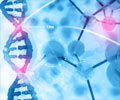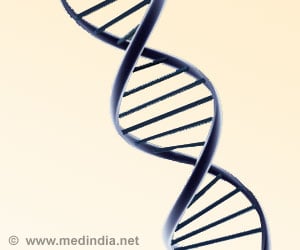Landmark global genetic interaction map is revolutionizing how genes are being studied. Genes are looked as a social network of the body, interacting in group.

‘Genes with similar genetic interaction profiles are connected in a global network, such that genes exhibiting more similar profiles are located closer to each other, whereas genes with less similar profiles are positioned farther apart.’





Prior studies of yeast cells have shown only a fraction of genes, one out of five, was essential for a cell’s survival. This discovery was made by an international consortium of scientists over a decade ago where they targeted each of the yeast cell’s 6,000 genes for deletion. Recent advances in gene editing technology has allowed scientists to tackle the same question in human cells, resulting in the same answer—only a fraction of genes are essential to cell life. Building on this research, University of Minnesota computer science and engineering Associate Professor Chad Myers, along with Professors Brenda Andrews and Charles Boone from the University of Toronto’s Donnelly Centre, have created the first complete genetic interaction network of a yeast cell, one that begins to explain how thousands of genes coordinate with one another to orchestrate cellular life.
“Even though many common diseases are thought to be caused by many different loci in the genome, we don't really understand the basic principles for how multiple genes combine to have effects,” Myers said. “Our comprehensive study of double mutant combinations in yeast establishes a set of first principles that we expect to apply in many different species, including humans.”
Biking without brakes
These findings suggest that most genes within our genomes are “buffered” to protect the cell from mutations and environmental stresses. Cells contain backup systems to ensure the essential functions of life keep working properly, even when one part is damaged. To address this buffering property, scientists had to ask if cells can survive upon losing more than one gene at a time, and they had to test millions of gene pairs.
Advertisement
The global genetic interaction map catalogues the pairs of genes that provide back up for one another—if the gene function of one is lost, the other gene in the genome fills its role.
Advertisement
Geneticists would call the relationship between front and back brakes as “synthetic lethal," meaning that losing both, but neither by themselves, spells doom. Synthetic lethal double mutant gene pairs are relatively rare, but when they are found, they reveal important information on gene pairs that work together to control essential functions.
Guilt by association
What’s more, the global map shows that synthetic lethal gene pairs are more likely to control the same biological process in the cell. This way, scientists are able to predict what a gene actually does in the cell simply based on its genetic interaction patterns, a process referred to as “guilt by association”.
If most genes in the human genome have one or more backup genes, then instead of searching for single genes underlying diseases, researchers now must look for gene pairs. This poses a huge challenge because they must somehow examine on the order of 200 million (!) possible gene pairs in the human genome that are associated with a disease.
Fortunately, with the know-how from the yeast map, researchers can now begin to map genetic interactions in human cells, and even expand it to a number of different cell types.
“Technology to manipulate human genomes on a large scale exists now,” Myers said. “Our work in yeast provides a blueprint for how we can learn about the human genome through systematic manipulation in cell lines.”
The concept of synthetic lethality is already changing cancer treatment because of its potential to identify drug targets that exist only in tumor cells. Cancer cells differ from normal cells in that they have scrambled genomes, littered with mutations. If scientists could find the highly vulnerable back-up genes in cancer, they could target specific drugs at them to destroy only the cells that are sick, leaving the healthy ones untouched.
This work was primarily supported by the National Institutes of Health, Canadian Institutes of Health Research, RIKEN Strategic Programs for R&D, Japan Society for the Promotion of Science Kakeni Grants, and the National Science Foundation.
Source-Newswise










